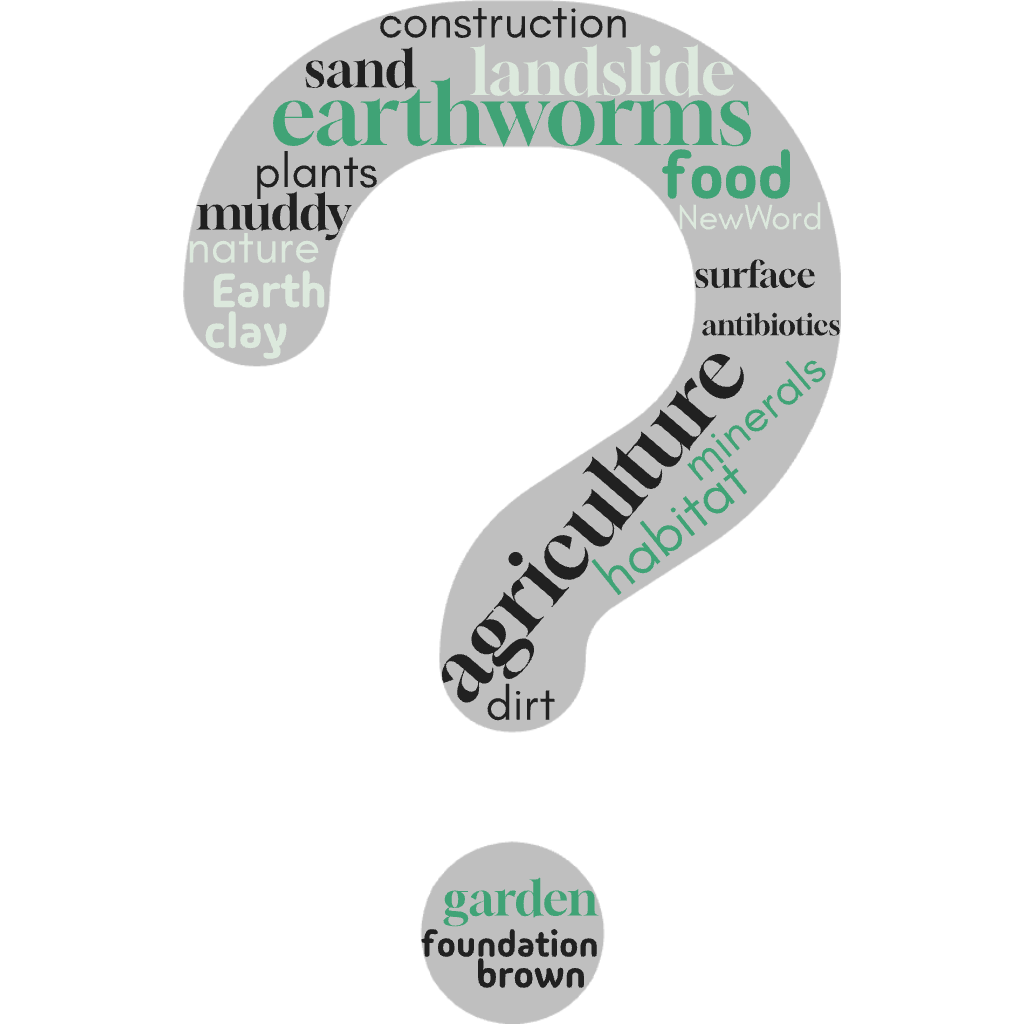Each person associates the word “soil” with different things. Some think of their garden or the park nearby, others about the mud they get on their shoes when it rains and again others about a vast hole that was dug at a neighboring construction site. But what is soil really?

Soil, briefly explained
Soil can be considered as one of the non-renewable resources found on Earth. Although it grows gradually during a process called soil formation, this growth is incredibly slow and insignificant when measured on a human time-scale.
There are various soil types, which can differ greatly from one another, but they generally comprise both organic and mineral components. The one exception is peatlands, which consist exclusively of organic materials.
Beyond being the ground we walk on and the source of food as well as many other products we consume, soils also serve as habitats for a fabulously varied mixture of species ranging from various plants and the tiniest of microbes through earthworms to mammals like the mole. The beneficial funtions that soils provide for all living beings, in particular to humans, are often referred to as ecosystem services and are discussed in more detail under Soil functions.
Why are Alpine soils special?
Instead of referring to a specific soil type in line with soil classification guidelines, “Alpine soils” is an umbrella term encompassing all soils that can be found across the Alpine region. While these soils can have different characteristics, they are collectively responsible for creating a diverse landscape with distinct flora and fauna – the Alps as we know it.
Contrary to other, non-mountainous landscapes, the Alpine region is characterized by alternating hilly meadows, low- or high-altitude peatlands and steep slopes covered by forest or left bare as rock. There is also a strong variability to the region’s climate, as climatic zones gradually change with the altitude. Naturally, a diverse landscape like this calls for a high variety of soil types that can nurture life under the different conditions present in close proximity to one another.
Like other soils, those in the Alpine region provide numerous essential functions such as food production, climate regulation, protection from natural hazards and last but not least, recreational spaces. However, what makes these soils special beyond their diversity, is their capacity to extend their influence and potential benefits beyond their own geographical unit towards downstream communities and ecosystems as well.
Are Alpine soils under threat?
Mountain soils are more sensitive to certain degradation processes than their lowland or low-relief counterparts. Slow soil formation rates, harsh climatic conditions, limited organic matter and nutrient contents, complex morphology and a steep topography make Alpine soils a prone target for intensive degradation processes like the loss of chemical and physical quality, water erosion and desertification.
Additionally, climate change exerts a strong influence over mountain soils. Changes in snow and rainfall patterns as well as the increased frequency and severity of extreme weather events can exacerbate degradation processes. For instance, nutrient depletion and the loss of the upper soil layer(s) might be intensified by events of extreme rainfall and snow movements.
Beside natural influences, human activity can also alter soil functions. Land-use change occurs when, for example, marginal agricultural areas are abandoned to intensify production at more favorable sites or a slope is transformed into a ski piste during the winter. These changes can adversely impact soils and should therefore be planned carefully while paying close attention to how the dynamics of each land-use type might influence soils and their functions.
Watch the video below to learn more about the interdependencies between soil, climate change and land use practices in the Alps.
